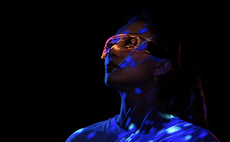There are more inventions on show at Royal Society than you could shake a wand at - and they have all been developed with business in mind
A host of new innovations, previously only witnessed in sci-fi movies, are being showcased at the Royal Society's Summer Science Exhibition, including spectacles that could help blind people see an...
To continue reading this article...
Join Computing
- Unlimited access to real-time news, analysis and opinion from the technology industry
- Receive important and breaking news in our daily newsletter
- Be the first to hear about our events and awards programmes
- Join live member only interviews with IT leaders at the ‘IT Lounge’; your chance to ask your burning tech questions and have them answered
- Access to the Computing Delta hub providing market intelligence and research
- Receive our members-only newsletter with exclusive opinion pieces from senior IT Leaders






















